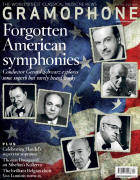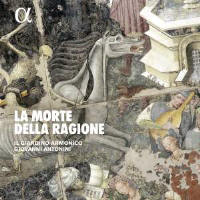Texte paru dans: / Appeared in: Alpha |
|
|
Outil de traduction (Très approximatif) |
|
|
Reviewer:
Mark Seow I welcome Il Giardino Armonico’s commitment to filling our modern ears with such strange sounds with, well, open ears. As if one could block out such unapologetic strangeness anyway. The bizarre vibrato in John Dunstable’s Puzzle Canon, the comic counterpoint in Josquin’s De tous biens plaine and the breathy, wiry timbres of the reed instruments that buzz against the historical brass throughout: all these, and more, are thrillingly weird. With no fewer than 26 images, including closeups of Hieronymus Bosch’s The Garden of Earthly Delights as well as botanical specimens, weirdness is something that the CD booklet – a thing of beauty – also strives to capture. Its text weaves together writings from Aristotle to Shakespeare interspersed with historical definitions of performance techniques employed by its historically informed players; and rightly so, for it is expertise that this disc so generously showcases. The performances are virtuoso in knowledge. I listen in awe and bowed respect to Il Giardino Armonico’s 14 players as they perform on 33 different instruments over 27 tracks. From Gawain Glenton’s improvisatory magic to Stefano Barneschi’s divisions that flicker in brilliance, we are immersed in a sound world simultaneously wild and eloquent. Their instruments are not simply replicas or strung with gut. Unlike other period bands (which recently seem to pop up with the profusion of daffodils), the instrumentalists of Il Giardino Armonico have worked long and hard to refine their craft. The complete mastery of tremolos and vibrazioni, that cultivation of the ‘moral attitude’ that is sprezzatura; this is the closest modern bodies come to possessing period flesh. A highlight is the anonymous 16th-century pavana after which the album is named. Heaving in opulence, 'La morte della Ragione' is rich in bass and charged with a sensual energy. The solo playing in the early woodwind, brass and strings is constantly inventive, curiously discursive, capricious in scales and lavish in ornament. A carnival of the weird and wonderful from start to finish. |
|




